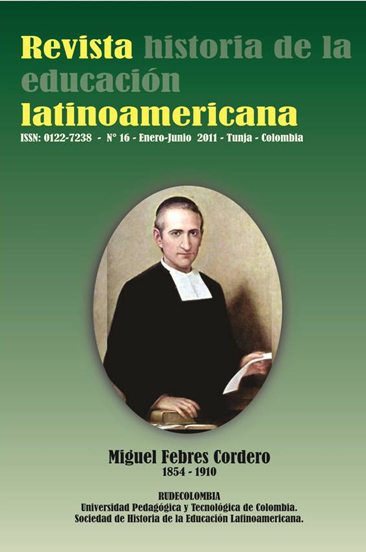THE TEACHER OF THE MANUALS AND TEACHING COLLECTION OF THE CURRICULUM STRUCTURE AS SOURCES OF RESEARCH IN THE EDUACTION

Abstract
This article aims at presenting the results of a survey on the education of the history. We have the intention of showing the manual of the teacher and the currucular structures as sources of the educational research. The discussion is motivated on the idea of Brazil as a such, the manuals of the teacher and the curricular structures to bring representations brings over of the education. There is argued that the organizers of the paradigms of the speech on the education practices in the books of text and curriculum limits have made concrete the theoretical and methodological bases. This way, the article presents and analyzes some aspects of this type of printed school.Keywords
Journal of Latin American Education History, teaching of the history, teacher´s books, Primary school representation.
Downloads
Download data is not yet available.